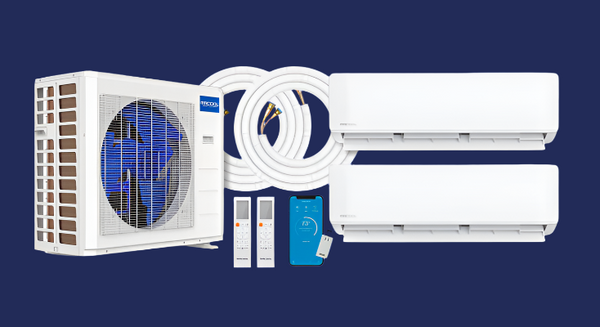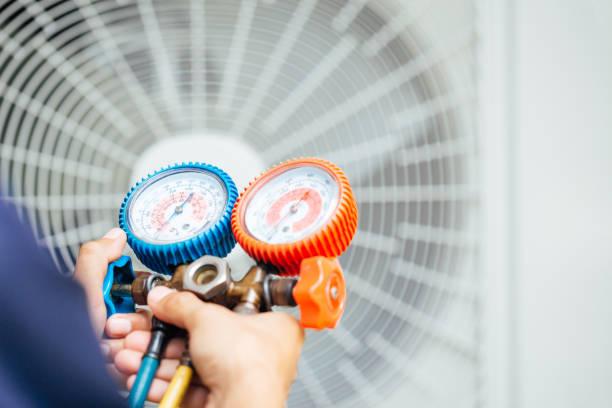New AC Refrigerants for 2025: What Homeowners Need to Know
The HVAC industry is undergoing a major shift starting January 1, 2025. Heat pumps and air conditioners using R-410A refrigerant will no longer be manufactured or imported in the U.S., marking a move toward more environmentally friendly alternatives like R-32 and R-454B. These changes, driven by environmental regulations and advancements in technology, are designed to reduce greenhouse gas emissions and pave the way for greener cooling solutions. But what does this mean for you as a homeowner? Here’s everything you need to know.
Why the Change?
The transition away from R-410A stems from its high Global Warming Potential (GWP). As part of the Kigali Amendment to the Montreal Protocol, the U.S. Environmental Protection Agency (EPA) has mandated a phase-down of hydrofluorocarbons (HFCs) like R-410A. New refrigerants such as R-32 and R-454B offer significantly lower GWPs, making them better for the environment.
What Happens to R-410A?
If your current HVAC system uses R-410A, there’s no need to worry. Here’s what to expect:
- Availability: R-410A will remain available for servicing existing systems for many years.
- Repairs and Replacements: Technicians can repair and maintain R-410A systems, and replacement parts will still be available until supplies run out.
- Mixed Installations: After December 31, 2025, you can replace just the outdoor condensing unit with an R-410A system. If replacing both the indoor and outdoor units, a new refrigerant system will be required.
In short, R-410A isn’t disappearing, but its role will gradually diminish as the industry shifts to greener alternatives.
What Are the New Refrigerants?
The two main refrigerants replacing R-410A are R-32 and R-454B, both offering lower GWPs and improved environmental performance.
R-32
- GWP: ~675 (much lower than R-410A’s GWP of 2,088)
- Performance: Already widely used globally, R-32 is known for its energy efficiency.
- Safety: Mildly flammable (A2L classification), requiring proper handling and installation.
R-454B
- GWP: ~466 (even lower than R-32)
- Performance: Offers similar efficiency and cooling/heating capabilities to R-32.
- Safety: Also mildly flammable, with similar precautions needed.
Which Refrigerant Should You Choose?
The choice between R-32 and R-454B depends on several factors:
- Availability: Manufacturers are divided on which refrigerant to adopt.
- Technician Expertise: Your technician’s familiarity with each refrigerant may influence the recommendation.
- Environmental Goals: Both refrigerants reduce your carbon footprint, but R-454B offers slightly better environmental performance.
Cost Implications
Switching to new refrigerants will come with initial costs:
- Higher Refrigerant Costs: R-32 and R-454B are expected to cost 15% more than R-410A initially.
- More Expensive Equipment: New systems designed for R-32 or R-454B will include updated safety features, increasing their price.
Over time, however, R-410A will become more expensive due to reduced production, while costs for R-32 and R-454B are likely to decrease as adoption grows.
What Does This Mean for You?
Your decision will depend on your circumstances:
- Long-Term Homeowners: If you plan to stay in your home for 10+ years, investing in a system with the new refrigerants is a smart move. These systems will be easier to maintain and align with future standards.
- Short-Term Goals: If you’re planning to move or sell your home soon, sticking with an R-410A system can save you money upfront, as these systems remain reliable and cost-effective.
Why Trust MRCOOL DIY Direct?
Whether you’re upgrading to a new refrigerant system or sticking with R-410A, MRCOOL DIY Direct is here to guide you through the transition. As the USA’s most trusted MRCOOL dealer, we offer:
- A wide range of HVAC systems, including heat pumps, mini-splits, and central air units.
- Expert support to help you select the best system for your home and budget.
- Competitive pricing to ensure you save money during this important transition.
Take Action Now to Save
If you’re considering upgrading your HVAC system, now is the time to act. By investing in an R-410A system before the phaseout, you can:
- Save money upfront, as these systems are more affordable than their R-32 or R-454B counterparts.
- Avoid price increases tied to new refrigerants and updated safety features.
- Secure inventory while R-410A systems are still widely available.
📅 Don’t Wait: With prices expected to rise and supplies diminishing, upgrading now can lock in significant savings.
Conclusion
The 2025 refrigerant transition represents a step forward for the environment, but it doesn’t have to disrupt your comfort or budget. By understanding your options and planning ahead, you can make an informed decision that suits your needs and goals.
Visit MRCOOL DIY Direct today to explore our extensive selection of HVAC systems designed to keep your home comfortable and energy-efficient—no matter what refrigerant the future holds. Let us help you navigate this transition with confidence!




